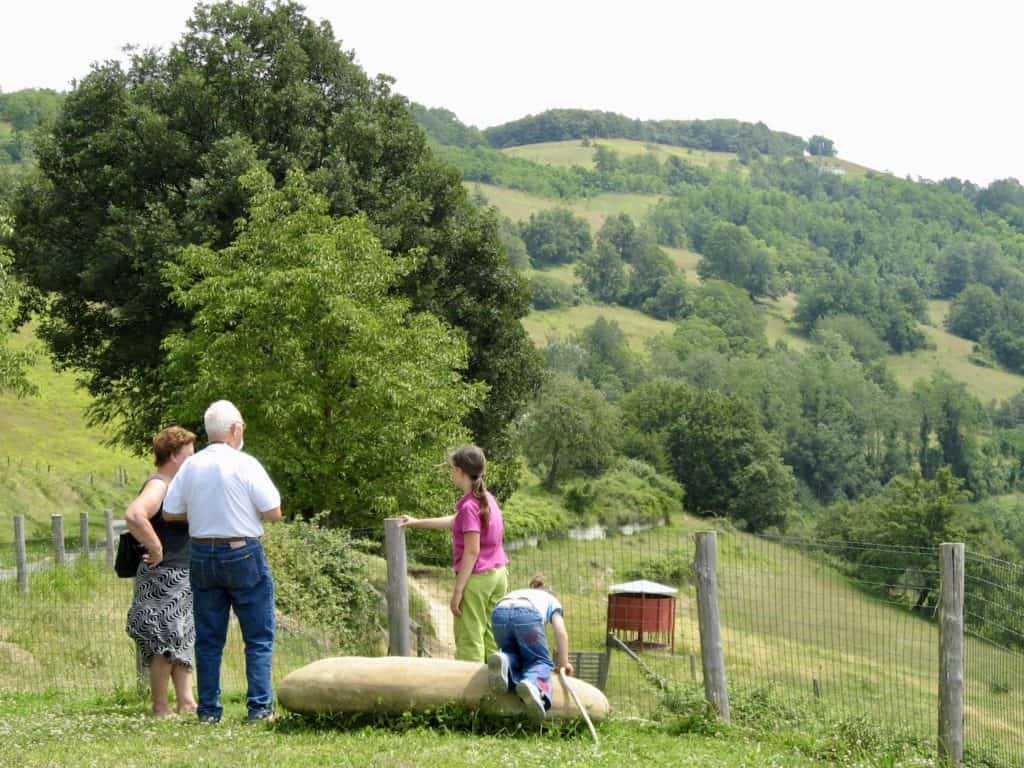Traveling in Europe is a real pleasure, and getting around by car is part of the fun. Renting a car can add to your enjoyment as you explore a new area. Lolly and I have rented cars and have driven all over Europe and North America. I am the pilot, Lolly is the navigator and chief morale officer. Over the years, we have learned valuable lessons when renting cars and driving abroad. This article highlights tips for renting a car and driving in Greece — all based on our experiences.
Note: This is written by my husband and trusty travel partner, Pop.
Our Greece Itinerary
With traveling, there are always trade-offs, given the time allotted for the visit. Lolly and I began in Athens and visited its highlights over three days; then, we began our island hopping: Santorini, Crete, and Rhodes.
If a vacation to this beautiful country is in your future, check out trip planning ideas and tips for a two-week trip to Greece along with the best of Santorini, Crete, and Rhodes.
Renting a Car in Greece
Here are some tips that should help make your experience a positive one:
- obtain an International Driver’s Permit available at AAA;
- when renting a car, consider all the extra liability coverages (you’ll see why later);
- be prepared to switch from one smartphone-based navigation app (usually Waze, Google Maps, or Apple Maps) to another in a flash;
- when in doubt, rent a car smaller than we would normally do in North America because the roads in Greece are usually narrower than many of us are used to;
- after renting a car and when facing a different type of car (a smaller size or manual instead of automatic transmission) or even driving conditions that are unfamiliar to us, try to get some early, lower-stress practice in (in a parking lot or quiet street) before heading into significant traffic; and
- when going into areas with significant traffic and/or challenging signage (i.e., different alphabet, complicated pronunciations, etc.), develop a navigation plan before entering the fray.
A note about the International Drivers Permit: I always get one before we leave for our trips abroad if we plan to rent a car while away. I am seldom asked about it, but the rental car company in Greece asked to see mine before releasing the rental car to me.
GPS Apps & Small Greek Towns & Villages
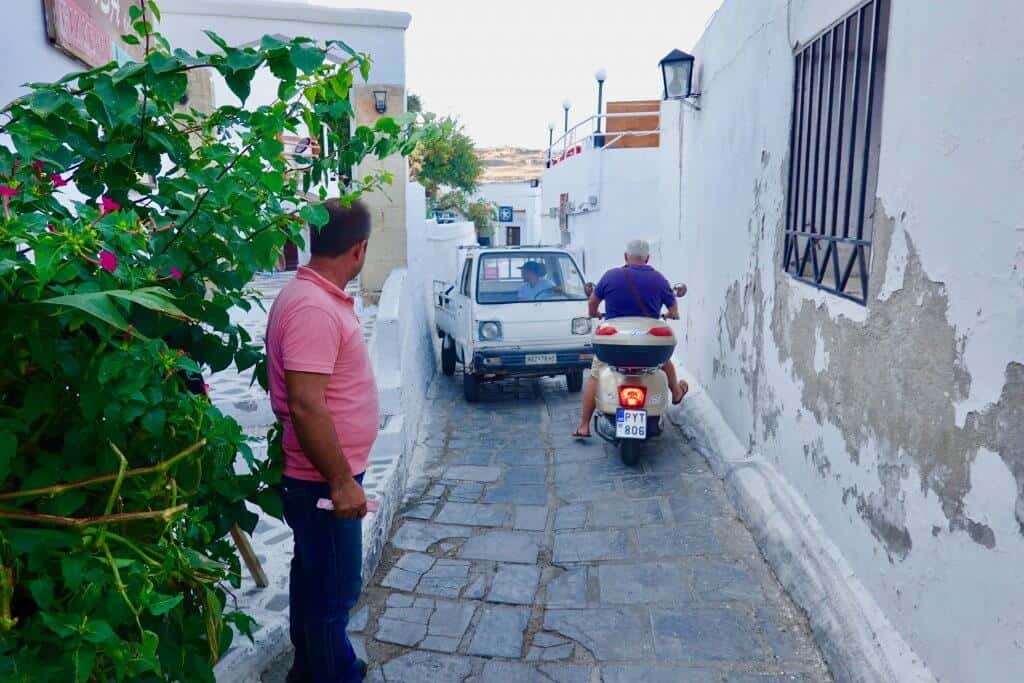
Like portions of other European countries, centuries-old roads and streets in Greece can become narrow and sometimes unforgiving for today’s horseless carriages. This driving challenge can be compounded if you use GPS apps to navigate. This is because GPS apps don’t always know the true conditions on the ground.
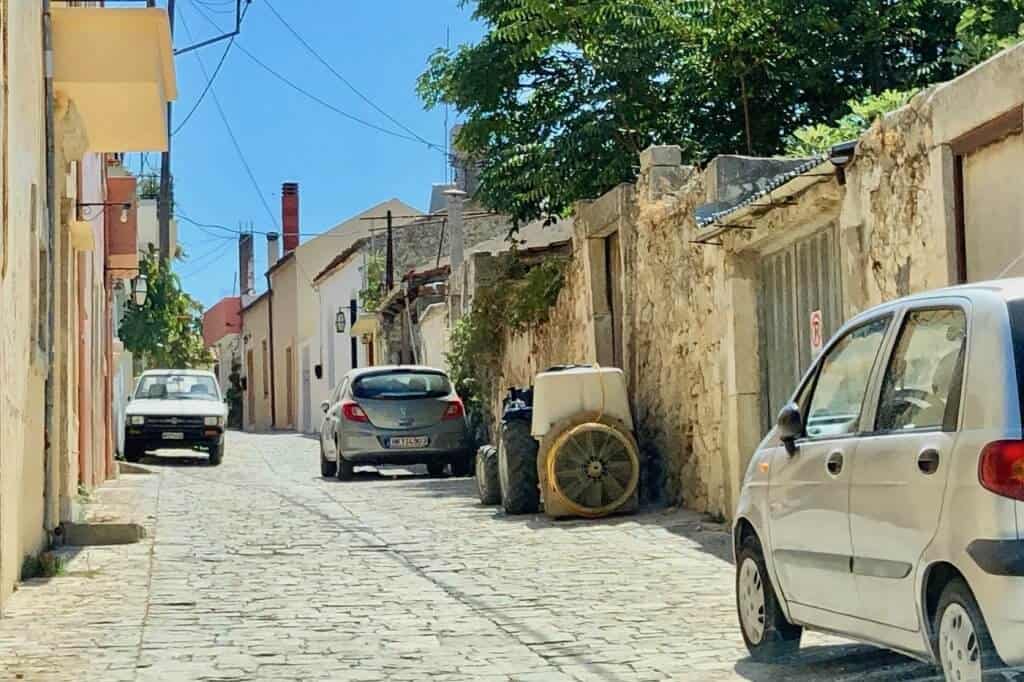
Lolly and I discovered that with some frequency, these apps are not yet fully capable of discerning whether that ever-narrowing Greek village street will remain wide enough for you to traverse uneventfully. They also don’t seem to do well gauging whether the next 90-degree turn they want you to make is actually doable by anything other than a donkey-drawn cart, motorcycle, or bike. This experience in one small Greek village reinforced our first renting and driving abroad lesson learned: when renting a car, take all the extra liability coverages. In this case, when we returned our rental car to the Greek island airport, we added a variety of scrapes and dents. But, to this day, not a peep from the rental car company. Those extra coverages were worth the modest additional cost.
If you are staying overnight in the middle of one of those quaint, small towns, check first with the hotel/B&B for explicit instructions as to how to get there and where to park. Your up-front due diligence will be rewarded.
Finding Your Way Back At Night
Lolly and I truly enjoyed our visit to the island of Rhodes (a short flight from Crete). We stayed inside the walled medieval Old Town (where most vehicles are prohibited). As a result, when we rented a car for a day-long island sightseeing excursion, we had to pick it up outside the Old Town’s gates. No problem, right? Right!
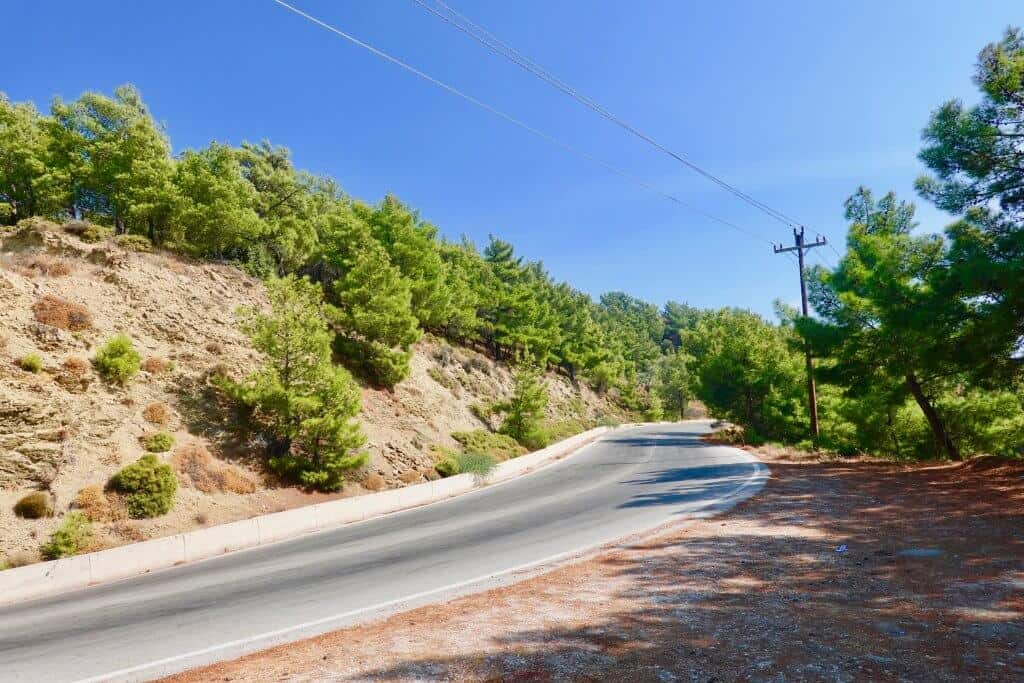
But, when returning to a town that night, things were not so easy. Specifically, the night lighting of many old European towns is not like that of New York, Chicago, or Philadelphia. In some areas, it is fine; in others, it is okay; and in others, it is non-existent. Good luck trying to find a parking space in an area — with little to no streetlights — that dates back centuries (very narrow) and with which you are relatively unfamiliar.
Success!
This is what Lolly and I faced after a fantastic day exploring the island of Rhodes. Only because I had gone out jogging the previous two mornings are we not still circling the area looking for a parking space. Airplane pilots use the term TO/GA. This stands for “take-off” and “go-around” again for situations where they have touched down but cannot fully land the plane (i.e., cow on the runway, land too long, etc.).
That night Lolly and I did at least three Old Town Rhodes equivalents of TO/GAs. Finally, I saw an area that looked familiar to me from my morning jogs. We took a chance, turned right, and then right again, and, miracle of miracles, we were exactly where we wanted to be. And there was a parking space waiting for us. This came after about ten minutes of mounting frustration.
This experience reinforced one of the original lessons we failed to follow that morning. And that is to develop a navigation plan before entering the fray. This is especially true when entering areas with significant traffic and/or challenging signage (e.g., different alphabet, complicated pronunciations, etc.).
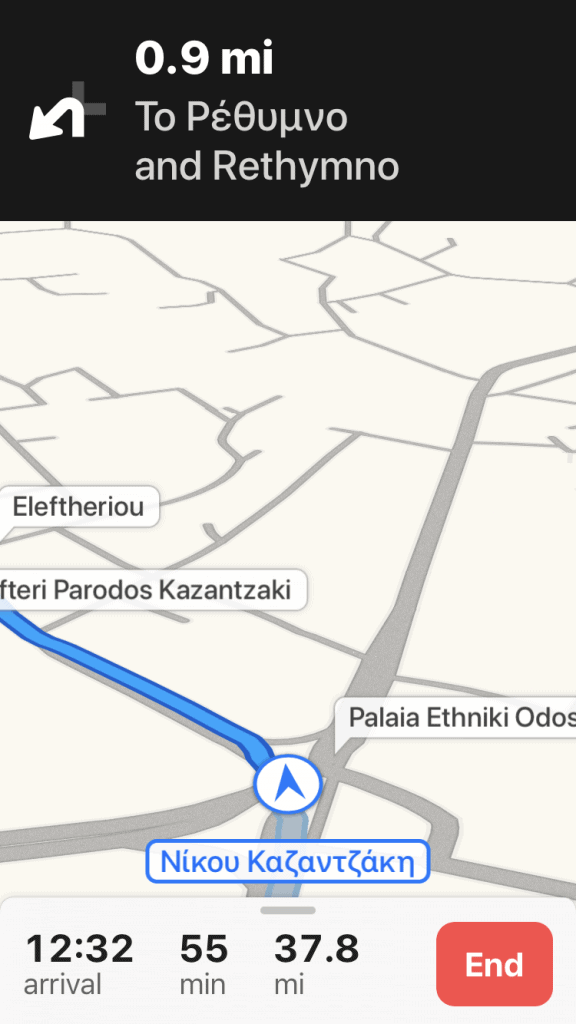
Driving in Crete
During our pre-trip preparation, we stumbled upon some information that described the unofficial etiquette of Cretan driving. In Crete, virtually all roads and “highways” are two lanes, often with broad and well-maintained shoulders. “So what?” you may ask. Well, the two-lane configuration significantly limits the opportunity for passing slower vehicles. Cretan creativity developed a solution.
Local Rules of the Road
When someone comes up from behind you who might be interested in passing you, even if the center line indicates no passing, do the following:
- Check to see if the shoulder is reasonably wide and free of debris.
- If the results of #1 are positive, check to see that those conditions will last, at your current speed, for at least enough time for the vehicle behind you to pass.
- If the results of #1 and #2 are positive, scoot your vehicle over to the right for a distance with which you are comfortable.
- If the driver behind you wants to pass, she/he will take advantage of your generosity and squeeze between you, the centerline, and any oncoming traffic.
- Once you have been passed, resume your normal between-the-lines driving position. If the driver behind you does not pass you, she/he was actually not interested in passing you at that time, and again you can resume your normal between-the-lines driving position.
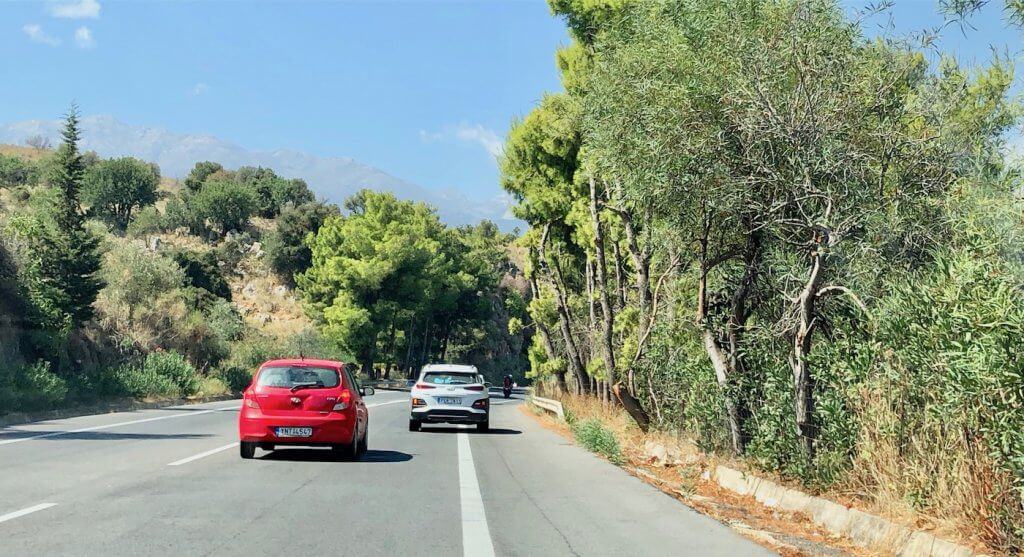
In reality, the Cretans have invented a civilized way of turning a two-lane road temporarily into a three-lane road. By the way, oncoming drivers seem to be fully prepared for this and will also scoot over a bit toward their shoulder to aid in limiting the degree of “squeeze-through” necessary. Also, when the shoulders are very generous and the traffic a bit heavy, don’t be surprised if this inventive procedure is implemented both ways simultaneously, thus turning two lanes into four lanes for brief periods of time.
Once I got the hang of this process, I liked it. I never witnessed any road rage, people stares, negative hand gestures, or the like.
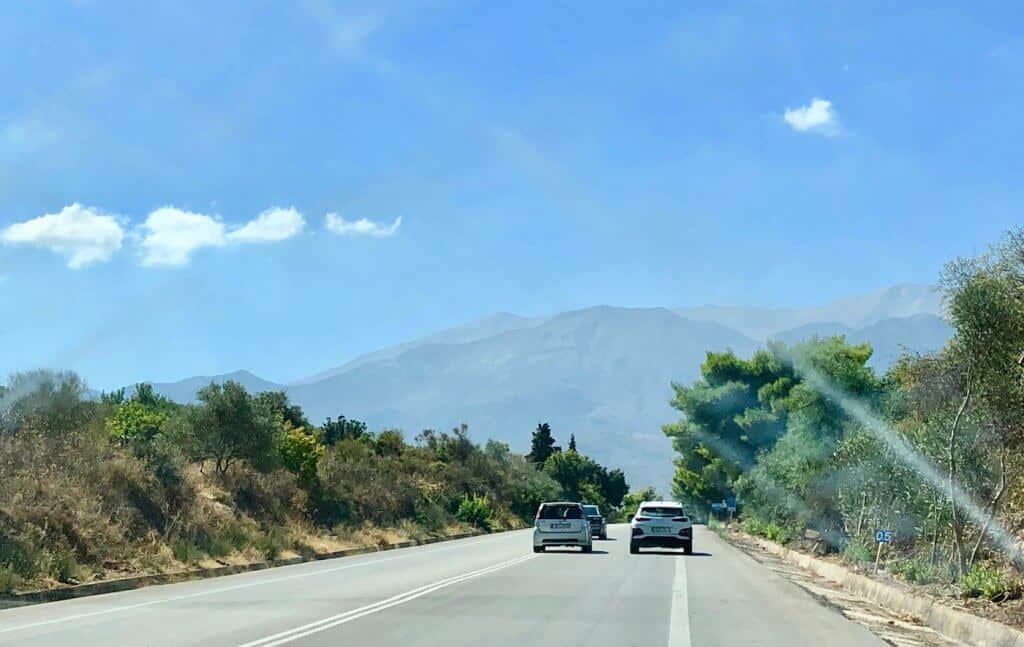
Places to Visit in Greece
- A Guide for Two Weeks in Greece
- Top 6 Things to Do in Santorini
- Top 8 Places to Visit in Rhodes
- A Visitor’s Guide to Crete
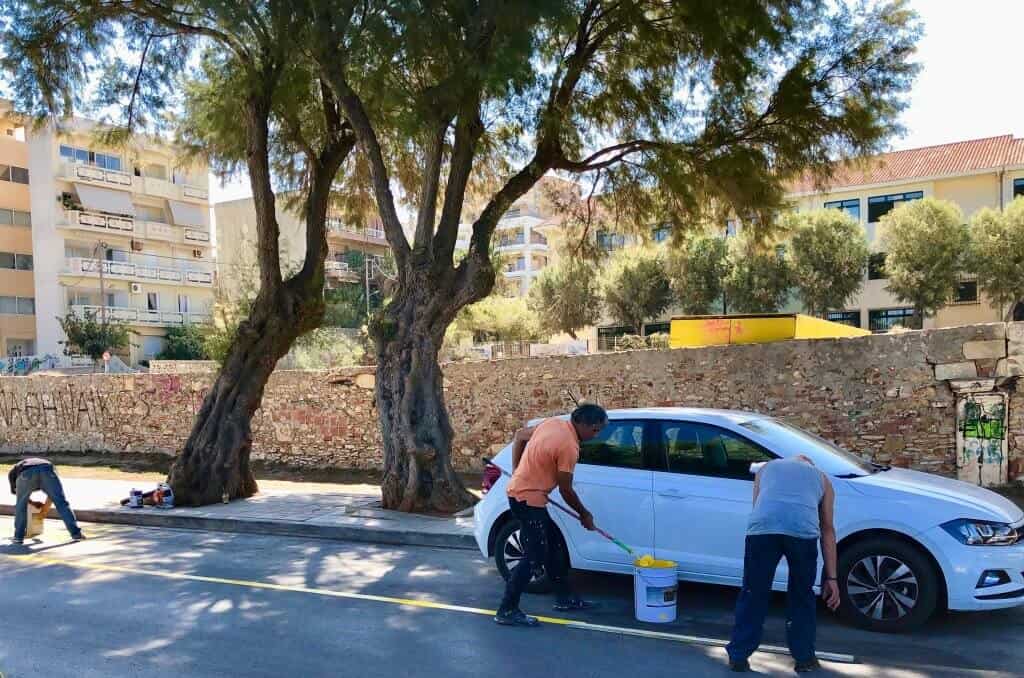
Other Related Articles
- Best Apps and Websites for Savvy Travelers
- Driving Tips for Europe
- How to Use Google Translate When Traveling
- Travel Planning Timeline
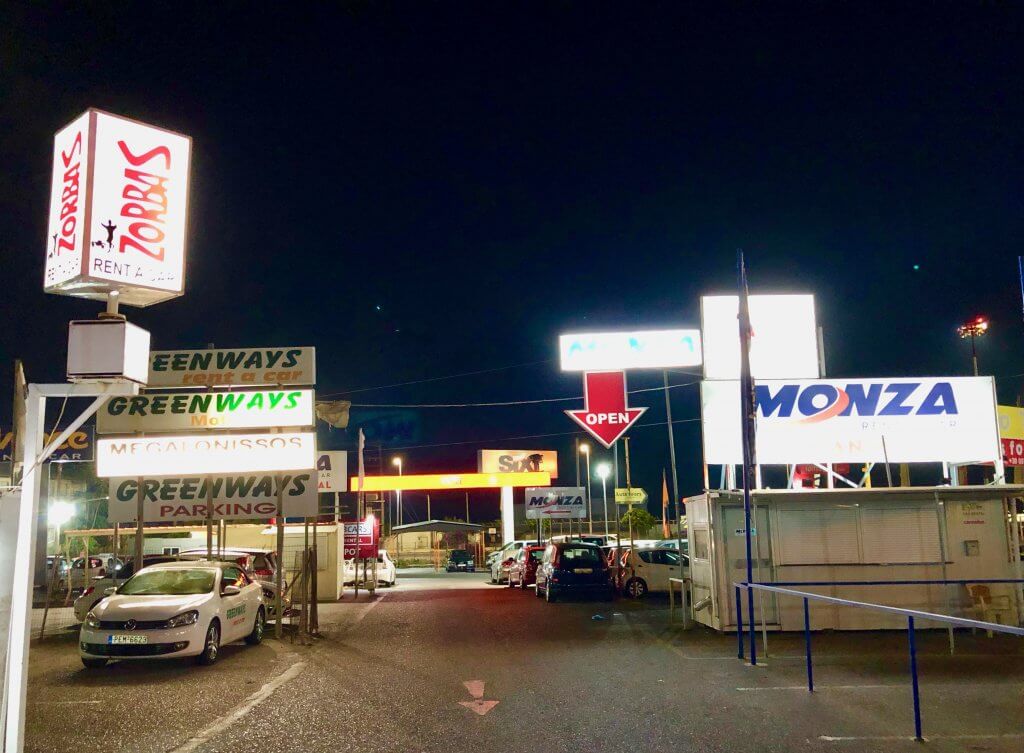
Final Thoughts
Driving a rental car is a key part of how Lolly and I explore the countries we visit. With good preparation, we’ve not yet found a driving challenge we could not comfortably handle. And the benefits of having a flexible schedule far outweigh any hiccups we experience while driving. So, have at it! Happy travels!
Comments?
Feel free to share experiences or other suggestions about driving in Greece. Your ideas could help other readers. 🙂

